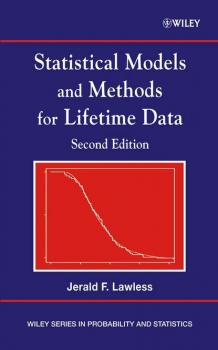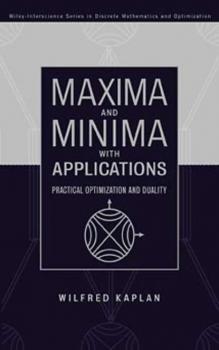Математика
Различные книги в жанре МатематикаForecasting with Dynamic Regression Models
One of the most widely used tools in statistical forecasting, single equation regression models is examined here. A companion to the author's earlier work, Forecasting with Univariate Box-Jenkins Models: Concepts and Cases, the present text pulls together recent time series ideas and gives special attention to possible intertemporal patterns, distributed lag responses of output to input series and the auto correlation patterns of regression disturbance. It also includes six case studies.
Leading Personalities in Statistical Sciences
A fascinating chronicle of the lives and achievements of the men and women who helped shapethe science of statistics This handsomely illustrated volume will make enthralling reading for scientists, mathematicians, and science history buffs alike. Spanning nearly four centuries, it chronicles the lives and achievements of more than 110 of the most prominent names in theoretical and applied statistics and probability. From Bernoulli to Markov, Poisson to Wiener, you will find intimate profiles of women and men whose work led to significant advances in the areas of statistical inference and theory, probability theory, government and economic statistics, medical and agricultural statistics, and science and engineering. To help readers arrive at a fuller appreciation of the contributions these pioneers made, the authors vividly re-create the times in which they lived while exploring the major intellectual currents that shaped their thinking and propelled their discoveries. Lavishly illustrated with more than 40 authentic photographs and woodcuts * Includes a comprehensive timetable of statistics from the seventeenth century to the present * Features edited chapters written by 75 experts from around the globe * Designed for easy reference, features a unique numbering scheme that matches the subject profiled with his or her particular field of interest
Counting Processes and Survival Analysis
The Wiley-Interscience Paperback Series consists of selected books that have been made more accessible to consumers in an effort to increase global appeal and general circulation. With these new unabridged softcover volumes, Wiley hopes to extend the lives of these works by making them available to future generations of statisticians, mathematicians, and scientists. «The book is a valuable completion of the literature in this field. It is written in an ambitious mathematical style and can be recommended to statisticians as well as biostatisticians.» -Biometrische Zeitschrift «Not many books manage to combine convincingly topics from probability theory over mathematical statistics to applied statistics. This is one of them. The book has other strong points to recommend it: it is written with meticulous care, in a lucid style, general results being illustrated by examples from statistical theory and practice, and a bunch of exercises serve to further elucidate and elaborate on the text.» -Mathematical Reviews «This book gives a thorough introduction to martingale and counting process methods in survival analysis thereby filling a gap in the literature.» -Zentralblatt für Mathematik und ihre Grenzgebiete/Mathematics Abstracts «The authors have performed a valuable service to researchers in providing this material in [a] self-contained and accessible form. . . This text [is] essential reading for the probabilist or mathematical statistician working in the area of survival analysis.» -Short Book Reviews, International Statistical Institute Counting Processes and Survival Analysis explores the martingale approach to the statistical analysis of counting processes, with an emphasis on the application of those methods to censored failure time data. This approach has proven remarkably successful in yielding results about statistical methods for many problems arising in censored data. A thorough treatment of the calculus of martingales as well as the most important applications of these methods to censored data is offered. Additionally, the book examines classical problems in asymptotic distribution theory for counting process methods and newer methods for graphical analysis and diagnostics of censored data. Exercises are included to provide practice in applying martingale methods and insight into the calculus itself.
Runs and Scans with Applications
Expert practical and theoretical coverage of runs and scans This volume presents both theoretical and applied aspects of runs and scans, and illustrates their important role in reliability analysis through various applications from science and engineering. Runs and Scans with Applications presents new and exciting content in a systematic and cohesive way in a single comprehensive volume, complete with relevant approximations and explanations of some limit theorems. The authors provide detailed discussions of both classical and current problems, such as: * Sooner and later waiting time * Consecutive systems * Start-up demonstration testing in life-testing experiments * Learning and memory models * «Match» in genetic codes Runs and Scans with Applications offers broad coverage of the subject in the context of reliability and life-testing settings and serves as an authoritative reference for students and professionals alike.
Bayesian Inference in Statistical Analysis
Its main objective is to examine the application and relevance of Bayes' theorem to problems that arise in scientific investigation in which inferences must be made regarding parameter values about which little is known a priori. Begins with a discussion of some important general aspects of the Bayesian approach such as the choice of prior distribution, particularly noninformative prior distribution, the problem of nuisance parameters and the role of sufficient statistics, followed by many standard problems concerned with the comparison of location and scale parameters. The main thrust is an investigation of questions with appropriate analysis of mathematical results which are illustrated with numerical examples, providing evidence of the value of the Bayesian approach.
Statistical Models for Causal Analysis
Simplifies the treatment of statistical inference focusing on how to specify and interpret models in the context of testing causal theories. Simple bivariate regression, multiple regression, multiple classification analysis, path analysis, logit regression, multinomial logit regression and survival models are among the subjects covered. Features an appendix of computer programs (for major statistical packages) that are used to generate illustrative examples contained in the chapters.
Statistical Models and Methods for Lifetime Data
Praise for the First Edition «An indispensable addition to any serious collection on lifetime data analysis and . . . a valuable contribution to the statistical literature. Highly recommended . . .» -Choice «This is an important book, which will appeal to statisticians working on survival analysis problems.» -Biometrics «A thorough, unified treatment of statistical models and methods used in the analysis of lifetime data . . . this is a highly competent and agreeable statistical textbook.» -Statistics in Medicine The statistical analysis of lifetime or response time data is a key tool in engineering, medicine, and many other scientific and technological areas. This book provides a unified treatment of the models and statistical methods used to analyze lifetime data. Equally useful as a reference for individuals interested in the analysis of lifetime data and as a text for advanced students, Statistical Models and Methods for Lifetime Data, Second Edition provides broad coverage of the area without concentrating on any single field of application. Extensive illustrations and examples drawn from engineering and the biomedical sciences provide readers with a clear understanding of key concepts. New and expanded coverage in this edition includes: * Observation schemes for lifetime data * Multiple failure modes * Counting process-martingale tools * Both special lifetime data and general optimization software * Mixture models * Treatment of interval-censored and truncated data * Multivariate lifetimes and event history models * Resampling and simulation methodology
Design and Analysis of Clinical Experiments
First published in 1986, this unique reference to clinical experimentation remains just as relevant today. Focusing on the principles of design and analysis of studies on human subjects, this book utilizes and integrates both modern and classical designs. Coverage is limited to experimental comparisons of treatments, or in other words, clinical studies in which treatments are assigned to subjects at random.
Maxima and Minima with Applications
This new work by Wilfred Kaplan, the distinguished author of influential mathematics and engineering texts, is destined to become a classic. Timely, concise, and content-driven, it provides an intermediate-level treatment of maxima, minima, and optimization. Assuming only a background in calculus and some linear algebra, Professor Kaplan presents topics in order of difficulty. In four short chapters, he describes basic concepts and geometric aspects of maxima and minima, progresses to problems with side conditions, introduces optimization and programming, and concludes with an in-depth discussion of research topics involving the duality theorems of Fenchel and Rockafellar. Throughout the text, the subject of convexity is gradually developed-from its theoretical underpinnings to problems, and finally, to its role in applications. Other features include: * A strong emphasis on practical applications of maxima and minima * An impressive array of supporting topics such as numerical analysis * An ample number of examples and problems * More than 60 illustrations highlighting the text * Algorithms to reinforce concepts * An appendix reviewing the prerequisite linear algebra Maxima and Minima with Applications is an ideal text for upper-undergraduate and graduate students taking courses in operations research, management, general engineering, and applied mathematics. It can also be used to supplement courses on linear and nonlinear optimization. This volume's broad scope makes it an excellent reference for professionals wishing to learn more about cutting-edge topics in optimization and mathematical programming.
Common Errors in Statistics (and How to Avoid Them)
Praise for the First Edition of Common Errors in Statistics " . . . let me recommend Common Errors to all those who interact with statistics, whatever their level of statistical understanding . . . " –Stats 40 « . . . written . . . for the people who define good practice rather than seek to emulate it.» –Journal of Biopharmaceutical Statistics « . . . highly informative, enjoyable to read, and of potential use to a broad audience. It is a book that should be on the reference shelf of many statisticians and researchers.» –The American Statistician « . . . I found this book the most easily readable statistics book ever. The credit for this certainly goes to Phillip Good.» –E-STREAMS A tried-and-true guide to the proper application of statistics Now in a second edition, the highly readable Common Errors in Statistics (and How to Avoid Them) lays a mathematically rigorous and readily accessible foundation for understanding statistical procedures, problems, and solutions. This handy field guide analyzes common mistakes, debunks popular myths, and helps readers to choose the best and most effective statistical technique for each of their tasks. Written for both the newly minted academic and the professional who uses statistics in their work, the book covers creating a research plan, formulating a hypothesis, specifying sample size, checking assumptions, interpreting p-values and confidence intervals, building a model, data mining, Bayes' Theorem, the bootstrap, and many other topics. The Second Edition has been extensively revised to include: * Additional charts and graphs * Two new chapters, Interpreting Reports and Which Regression Method? * New sections on practical versus statistical significance and nonuniqueness in multivariate regression * Added material from the authors' online courses at statistics.com * New material on unbalanced designs, report interpretation, and alternative modeling methods With a final emphasis on both finding solutions and the great value of statistics when applied in the proper context, this book is eminently useful to students and professionals in the fields of research, industry, medicine, and government.









